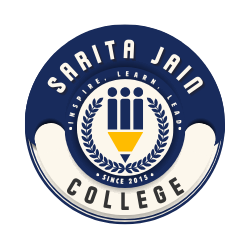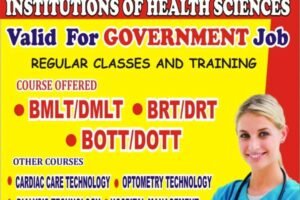A Day in the Life of a General Nursing & Midwifery Student
Embarking on a career in nursing and midwifery is both challenging and rewarding. For those considering enrolling in a General Nursing & Midwifery (GNM) program, understanding what a typical day looks like can be invaluable. This article explores the daily experiences, responsibilities, and learning opportunities of a GNM student, offering a comprehensive glimpse into this vital field of study.

Morning Routine: Starting the Day on the Right Foot
The day for a General Nursing & Midwifery student usually begins early. Many students rise before the crack of dawn, preparing for a day filled with lectures, practical sessions, and clinical rotations. An organized start is crucial; students often begin by reviewing their schedules, ensuring they have all necessary materials, and checking any updates from their instructors.
1. Early Morning Classes
GNM programs typically start with early morning classes. These sessions are designed to cover fundamental concepts of nursing and midwifery, including anatomy, physiology, and pharmacology. Lecturers use a combination of lectures, interactive discussions, and multimedia tools to deliver content effectively. Students are encouraged to participate actively and engage in discussions to enhance their understanding.
Mid-Morning: Transitioning to Practical Learning
2. Hands-On Training
After theoretical classes, students often transition to hands-on training sessions. These practical classes are held in simulation labs or clinical settings where students practice essential skills such as taking vital signs, administering medications, and performing basic procedures. Practical training is critical for developing the technical skills needed for real-world scenarios.
3. Clinical Rotations
Clinical rotations are a significant component of a GNM program. Students rotate through various departments such as pediatrics, obstetrics, and general medicine. During these rotations, students apply theoretical knowledge in real-world settings, working under the supervision of experienced nurses and midwives. This exposure helps them understand patient care dynamics, learn to handle medical equipment, and develop critical thinking skills.
Lunchtime: Refueling and Reflection
4. Break Time
By lunchtime, students typically have a short break to refuel and recharge. This time is often used for socializing with peers, discussing course material, or simply relaxing. It’s also an opportunity to review notes or prepare for afternoon sessions. Maintaining a balanced diet and staying hydrated are essential for sustaining energy throughout the busy day.
Afternoon: Academic and Practical Integration
5. Advanced Theoretical Classes
Afternoon sessions usually focus on advanced topics related to nursing and midwifery. These might include specialized subjects such as maternal and child health, mental health nursing, or emergency care. Students engage in case studies, group discussions, and problem-solving exercises to deepen their understanding and application of complex concepts.
6. Skill Development Workshops
In addition to lectures, GNM programs often include skill development workshops. These workshops are designed to enhance practical skills, such as wound care, patient assessment, and emergency response techniques. Students practice these skills in a controlled environment before applying them in clinical settings.
Late Afternoon: Clinical Practice and Reflection
7. Clinical Practice
As the day progresses, students might return to clinical practice, where they continue to gain hands-on experience in patient care. They may assist in administering treatments, observing medical procedures, or supporting patients in various ways. This practical experience is crucial for bridging the gap between classroom learning and real-world application.
8. Reflection and Documentation
At the end of the clinical day, students often spend time reflecting on their experiences. This might involve documenting patient interactions, recording observations, or completing clinical logs. Reflection is an essential part of the learning process, helping students assess their performance and identify areas for improvement.
Evening: Study and Self-Care
9. Study Time
After a long day of classes and clinical practice, students dedicate time to studying and completing assignments. This might include reviewing lecture notes, preparing for exams, or working on research projects. Effective time management is key, as students must balance their academic workload with practical training and personal responsibilities.
10. Self-Care and Relaxation
Self-care is crucial for maintaining well-being throughout the demanding GNM program. Students are encouraged to engage in activities that promote relaxation and stress relief, such as exercise, hobbies, or spending time with family and friends. Maintaining a healthy work-life balance is essential for sustaining motivation and performance in the program.
Challenges and Rewards
The journey of a General Nursing & Midwifery student is filled with both challenges and rewards. The rigorous schedule, demanding coursework, and emotional intensity of clinical practice require dedication and resilience. However, the opportunity to make a meaningful impact on patients’ lives and contribute to the healthcare field provides a deep sense of fulfillment.
11. Support Systems
Students benefit from various support systems, including faculty mentorship, peer support groups, and counseling services. These resources help students navigate the stresses of the program, address academic or personal challenges, and foster a supportive learning environment.
12. Career Aspirations
Upon completing the GNM program, graduates are well-prepared to enter the workforce as registered nurses and midwives. The skills and knowledge acquired during the program open doors to diverse career opportunities in hospitals, clinics, community health settings, and more. The rewarding nature of the profession, coupled with the skills developed during training, sets the stage for a successful and impactful career in healthcare.
Impact of Paramedical Professionals on Public Health: A Closer Look
Conclusion
A day in the life of a General Nursing & Midwifery student is a blend of rigorous academic learning, hands-on clinical experience, and personal development. From early morning classes to late-night study sessions, the journey is demanding yet deeply rewarding. For those passionate about making a difference in healthcare, the GNM program offers a comprehensive and fulfilling pathway to a meaningful career.
By understanding what to expect, prospective students can better prepare for the challenges and opportunities that lie ahead, ensuring they embark on their nursing and midwifery journey with confidence and enthusiasm.

